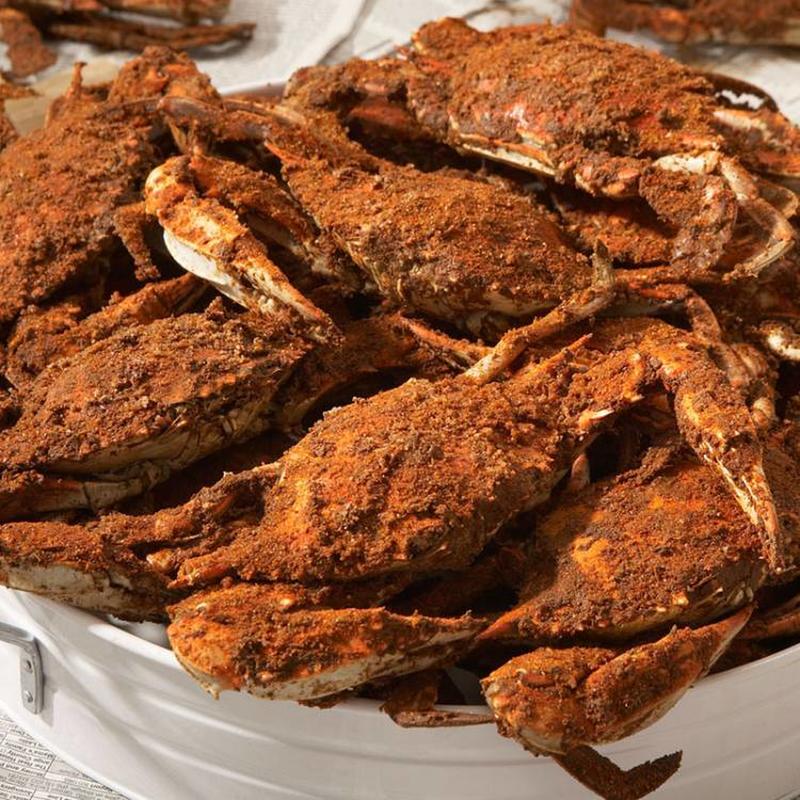
Just like Maine, Maryland has a crustacean of their own that is worthy of high praise, the Chesapeake blue crab. This particular crab is native of the Atlantic Ocean stretching from the Gulf of Mexico all the way up to the coasts of Delaware. Unfortunately, due to climate change and the overfishing of the prized shellfish, annual catches have seen a drastic decline in numbers of blue crabs. Conservation efforts have been established in order to replenish the population of the Chesapeake blue crab, hopefully saving them from becoming yet another endangered marine animal.
With that said, that definitely says a lot about how these bad boys taste. The steamed blue crab is known widely for its sweet white meat and Maryland has perfected the cooking process of the meat by lightly steaming the whole crab and dousing it in generous amounts of piquant spice mixes such as Old Bay. These tasty crabs are usually served atop brown butcher paper with no utensils except for a mallet and cracker so, be prepared to get your hands dirty and fight for the prized crab meat.
Chefs made their way into celebrity land a while ago. But how many celebrities that weren’t trained as professional cooks are actually whizzes in the kitchen? Here are several that come to mind.
Actress Julia Roberts is confident about her cooking skills. “I’m quite a good cook,” she told E! News. “I’m like a closet home ec teacher…I can really cook anything.” Roberts has said she often cooks fish for herself and her kids. And speaking of her three children, “They think that I’m a good cook,” Roberts told People. “They actually told me that I should open a restaurant.” She also relishes cooking for the holidays, particularly shredded Brussel sprouts. Roberts hasn’t published a cookbook, but we did find recipes attributed to her for peach crisp and banana hemp muffins. Or you can make the same summer salad the actress supposedly eats.
Chrissy Teigen started off as a supermodel. Then her love of cooking filtered into her professional life too. At this point, she’s created recipes for a limited Blue Apron release and also just launched her own home and cooking line at Target named “Cravings,” after the two cookbooks she’s released. Teigen describes cooking as “a time of peace” for herself. So maybe peace out to her tuna melt sandwich or the fried chicken wings that are a favorite of her husband, John Legend.
Lady Gaga, whose real name is Stefani Joanne Angelina Germanotta, comes from a cooking Italian family. Her father started his own restaurant in New York and also published a cookbook. And apparently, Lady Gaga has inherited the family’s cooking genes. Her Instagram account occasionally features photos of her culinary activities. Sure, sometimes it’s topless cooking. But other times it’s more poignant like in the post she shared about her bringing food to the family of her dear friend who passed away. Want to try a Gaga/Germanotta family favorite? Check out her recipe for whole wheat pasta with a sweet fennel sauce.